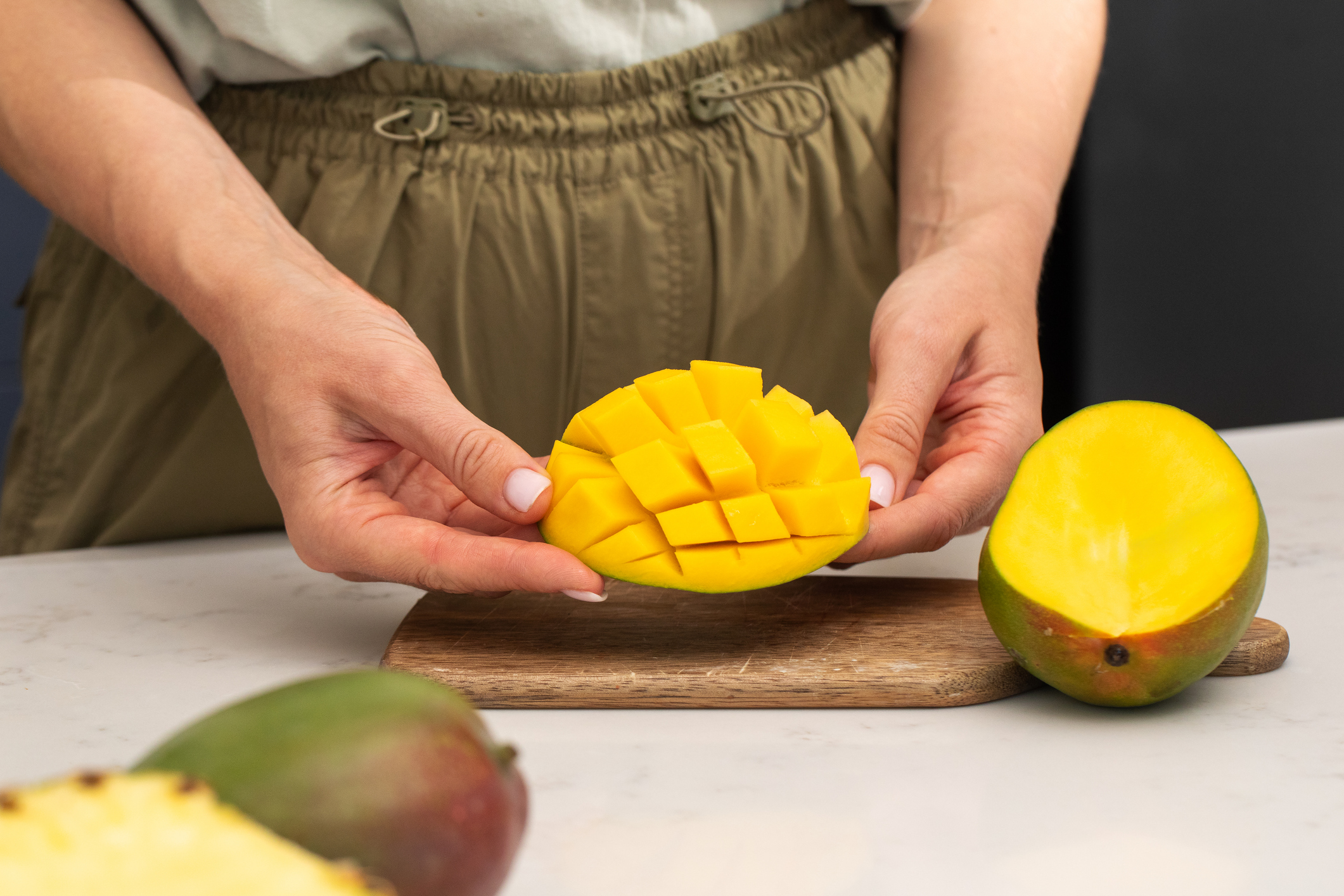Mangos in India
To do justice to the mango love in India, one must look back much farther into the history of civilization. In South Asia, mangos have been cultivated for thousands of years, and today nearly half the world’s mangos are cultivated in India alone, where it is the national fruit. It is safe to say, there is some serious mango love in India.
Mangos are commonly found in fresh produce street markets in India, brightening carts and stands with their yellow, green, and red tones. For locals, mangos are common grocery item. Most bring mangos home to include in their everyday diets and cuisine.
Indian cuisine, both robust and diverse, includes mangos in many dishes and pairings. Mango Lassi, a common Indian drink is enjoyed as a nice refreshment on hot days. Similarly, Aamras is a thick juice from mango pulp consumed with Chapati – a wheat flatbread, and Falooda is a popular dessert made with rose syrup, basil, jelly, vermicelli, and very often, mango.
In India, mangos are also used for more savory applications. South India is hopelessly in love with Aavakaaya, an Indian pickle that is made from unripe, sour mangos. Aavakaaya is prepared mostly during the pre-Summer seasons when mangos are about to ripen. In Andhra Pradesh, mango is often used in Dal preparations – a spicy Punjabi dish cooked with lentils.
No matter the craving, or the time of year, mangos can be found complimenting palates and accenting grocery markets. The Indian mango bond navigates much of the natives’ culinary journeys and continues to influence global culture and cuisine. Much of the mango influence we see today trickles back to the love that bonded Indians to mangos thousands of years ago.

